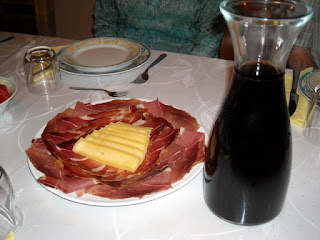Wednesday October 12 - our last day in Slovenia. Tomorrow morning back to Chicago over Zurich.
Another perfect day exploring the city - but no more to see. Lucky we did not get hit by a bicycle.
Arrived today by bus from Bled in Ljubljana, capital of Slovenia. A few cold days but now it is sunny and in the high 60s or low 70s. Happy to spent a few days alone (without guides) and roam around the city. Slovenia is a small country 2 million, Ljubljana has around 200,000 and 50,00 of them students.
A beautiful, clean city with a lot of bicycles and young people moving around. Smoking is a problem - not allowed inside restaurants so all restaurants have plenty of outside seats and tables. Prices just like in Germany not very high but you need Euros!
Another perfect day exploring the city - but no more to see. Lucky we did not get hit by a bicycle.
Arrived today by bus from Bled in Ljubljana, capital of Slovenia. A few cold days but now it is sunny and in the high 60s or low 70s. Happy to spent a few days alone (without guides) and roam around the city. Slovenia is a small country 2 million, Ljubljana has around 200,000 and 50,00 of them students.
A beautiful, clean city with a lot of bicycles and young people moving around. Smoking is a problem - not allowed inside restaurants so all restaurants have plenty of outside seats and tables. Prices just like in Germany not very high but you need Euros!

























